Sasayuri-Ann Could Be Japan’s Most Zen Retreat
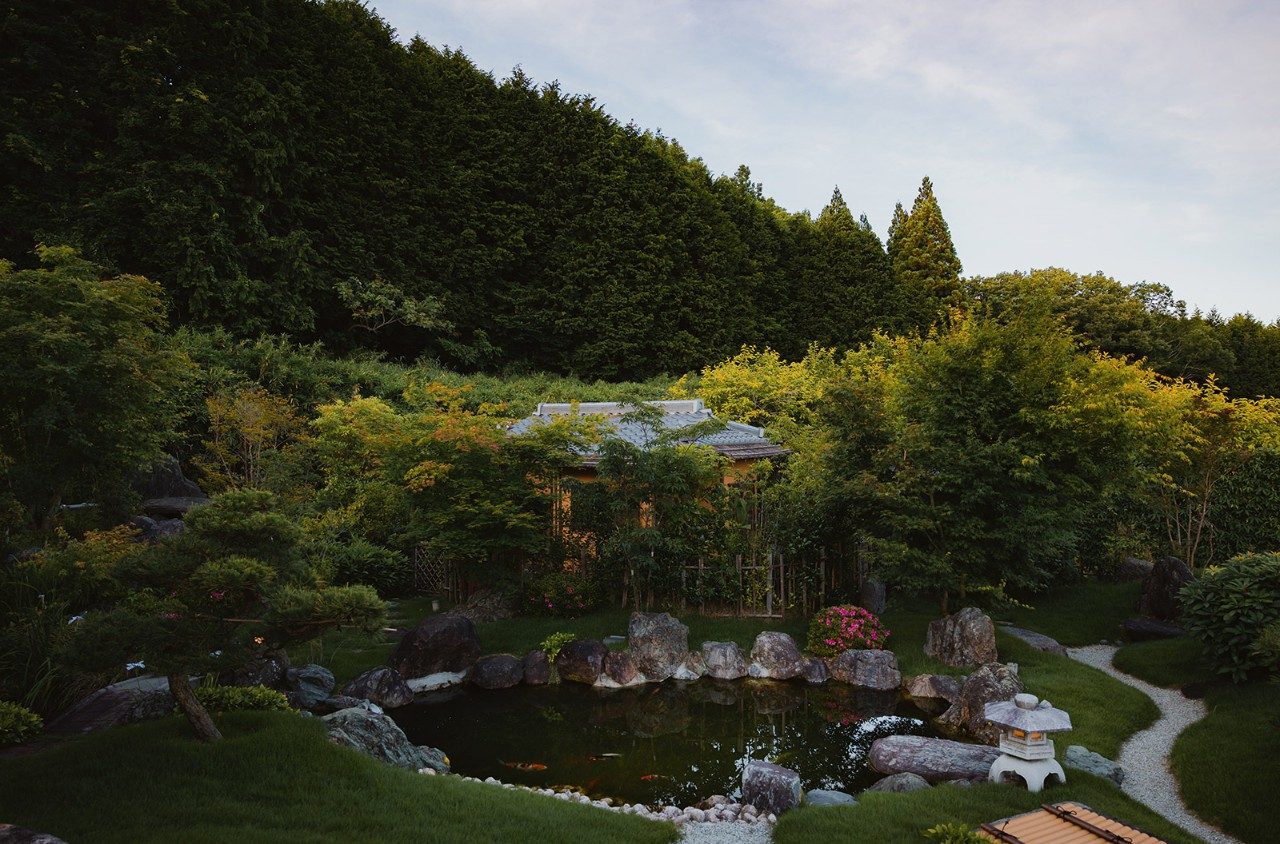
At a spiritual retreat in the Japanese countryside, Susan Horsburgh immerses herself in the country’s culture – under the tutelage of a kooky monk.
In the Nara countryside, surrounded by Japanese cypress trees, a mountain monk invites me into his small, sacred fire temple. It’s here that he chants every day before breakfast, kneeling in front of a statue of the Shugendō deity Zaō Gongen. “This is the cockpit where you fly into a different dimension – and I’m the pilot,” he says. “This is USS Enterprise and I’m Mr Spock.” With that, he tugs the tops of his ears skyward.

Tetsuji Matsubayashi is not your average monk. He’s a “crazy guy”. I know this because he tells me multiple times during our two-hour introductory chat. He’s also a proud entrepreneur with a penchant for using sci-fi analogies to make Eastern spiritualism more accessible to the Western tourist.
A decade ago, amid the rice paddies of Nara Prefecture’s Fukano village, about two hours’ drive from Kyoto, he created Sasayuri-Ann, a luxury retreat for foreigners seeking a taste of Japanese culture. “The moment I saw this view, I felt very happy,” says the 63-year-old grandfather, who named Sasayuri-Ann after the native Japanese lily. “Physical Tetsuji said, ‘This is money time!’”
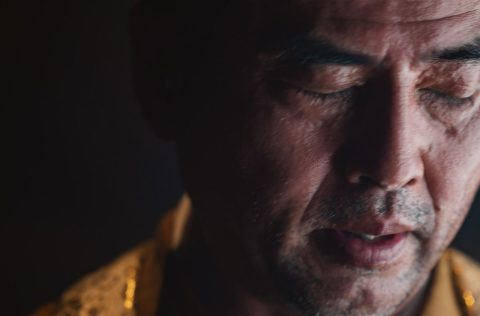
For a Zen Buddhist monk, business would be a no-go but Shugendō – a Buddhist-Shinto-Taoist combo – is a little looser. After our visit to Nara’s mammoth World Heritage-listed Kinpusenji Temple, we stop at a sake brewery and Matsubayashi tells me his sect is A-OK with alcohol.
Still, his faith is strong. His father died when he was eight and Matsubayashi has been on a quest for enlightenment ever since. He travelled to India to learn yoga as a young man and later started a successful trading company, before becoming a Yamabushi mountain monk two decades ago. Now he meditates for 90 minutes daily and fasts for three days every month. Weak with hunger, he then stands under the frigid nearby waterfalls to “purify” his mind and body, and performs a fire ceremony. When I ask what that involves, he tells me to use the QR code on a poster and watch the video.
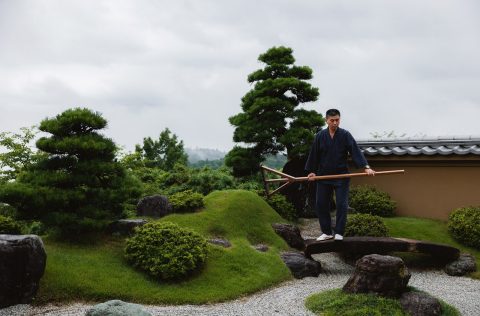
“I’m a salesman,” he says, revelling in his kooky reputation and doing his best to bolster it. “If you go to Kyoto, there are many ryokan but no crazy guy. This is Japan – they want the monkey man. They want authentic culture and experiences.”
At Sasayuri-Ann’s two private villas, there is a laundry list of activities to try, from flower arrangement and Japanese drum lessons to pottery workshops and rice planting.
Matsubayashi describes his guests as “private jet people” – which explains the helipad (it’s a 50-minute chopper ride from Osaka’s Kansai International Airport). Stressed out of their minds, they arrive in couples and families, eager to nail this whole meditation caper in two days flat: “They ask me, ‘What’s the technique? Who is your guru?’ They want to know how to master it, to be a PhD.”
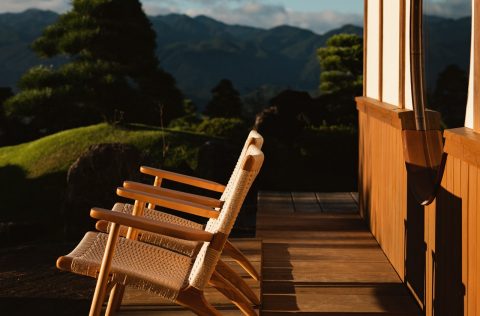
I may not be a private jet person but I do know stress: I have three teenage daughters. Any given day can involve weeping, door-slamming and the rueful questioning of my every life choice – so I’m up for two days of teen free contemplation.
The purpose-built Villa Ozunu, which sleeps up to five people (two in Western-style single beds and three on futons in the tatami room upstairs), is a haven for quiet self-reflection, with its karesansui rock garden, pond full of koi and round, neck-deep bathtub that overlooks pine forests and mountain peaks.
On the first morning, I wake up in my bamboo-lined bedroom, the dawn light filtered through paper screen windows, and head for the villa’s tatami living room, with a firepit in the centre and a thatched roof above. By the circular, east-facing window, I salute the rising sun and do an artless downward dog, while my guide, Yuko Ito, seamlessly moves from one yoga pose to the next. Behind her is a backdrop straight out of an ancient woodblock painting, all manicured bonsai trees and precisely raked pebbles.
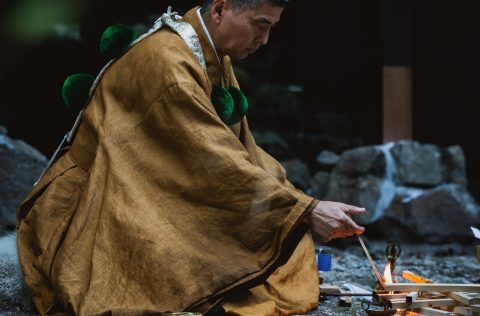
After breakfast, Matsubayashi – in his signature short navy robe and pants, his hair a riot of salt-and-pepper spikes – whisks us away in his hybrid RAV4 to the Akame 48 Waterfalls, birthplace of the ninja and a sacred site for Yamabushi mountain monks. When we arrive, he figuratively knocks at the door of the forest by blowing his conch-shell trumpet, performing an elaborate routine of claps and finger clicks, asking for permission to enter “It says, ‘Yes, please come in!’” Everything in the cosmos, he explains, has a consciousness and responds to our respect.
Wearing toe socks and zori (thongs), he sets a cracking pace up the trail, stopping sporadically to share insights. The rocky path hugs the Taki River, the icy water roaring over mossy volcanic rocks. All around are maple and wild cherry trees that flame red in autumn but spring, he says, is “paradise time”. We stop at a cave where there’s a figure of the eighth-century Buddhist monk and “brilliant guy” Kūkai. Matubayashi chants a rapid-fire prayer with his right palm outstretched, directing energy towards the statue. “It’s like a light sabre,” he says. “Star Wars!”
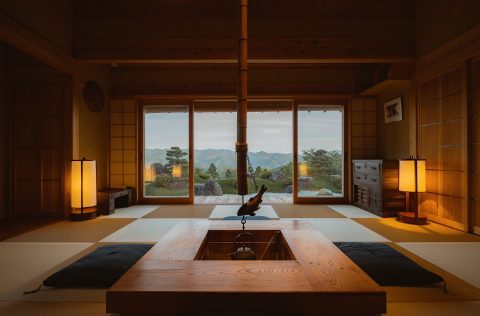
At Otome Falls, we pause for a standing meditation. He tells me to close my eyes and focus on the sound of the water. I soon become aware of the birdsong, the warmth of the sun, the sensation of my hands in my pockets. Meditation, he says, is a way to defrag the hard drive that is our brain. “Sit down for one hour and look inside yourself to realise you are not [just a] body.” You can stare at a flame, listen to a waterfall or focus on the breath but the key is to “concentrate the mind to prevent all other thoughts”.
That night, the local Iga beef – also known as ninja beef – puts me squarely back in my body: it’s the most tender, delicious meat I’ve tasted. As bamboo flute music plays in the background, Yuko and I join our hands in prayer, bow and say “itadakimasu”, giving thanks to Buddha, nature and the people who made the meal possible. Seated on cushions around the villa’s sunken hearth, we dip the thinly sliced, marbled beef into a bubbling pot of seaweed broth. A 20-second swish and it's cooked. Long after I’m full, I shoehorn in more shabu-shabu until all the meat is gone, knowing I may never eat anything like this again.
During our two days together, Matsubayashi shares complex theories about consciousness, hypersonic sounds and reincarnation. To the layperson, elements of his shamanic faith can seem esoteric and impenetrable but on the last night he distils his philosophy down to one central premise: appreciation of life. “It’s very simple,” he says. “Celebrate and be grateful.” A credo even this weary, teen-wrangling Westerner can live by.

Start planning now
SEE ALSO: 15 Best Under-the-radar Places to Visit in Japan
Image credit: Kenji Kudo


